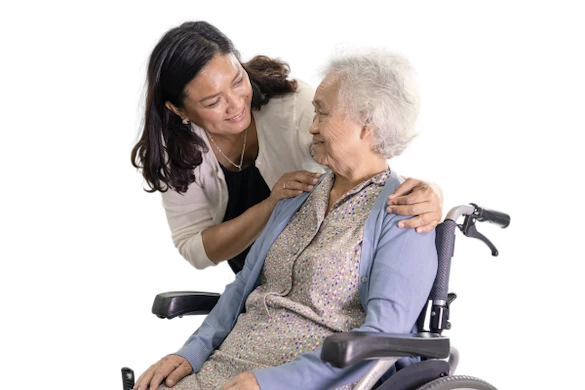Examining the Truth About 6 Most Common Hospice Myths
Many families are unaware of the comprehensive support provided by hospice care. Read on to discover the invaluable services hospice care offers.

Hospice care plays an incredibly valuable role in providing compassionate end-of-life support to patients and their families. However various myths and misconceptions have emerged over the years, which has contributed to several misunderstandings and apprehensions surrounding hospice care. This article aims to shed light on some of the common myths and misconceptions about hospice, and foster a better understanding of the invaluable services hospice offers.
Key Takeaways



Myth 1: Hospice is Only for the Last Few Days of Life
One of the most prevalent myths about hospice is that it is exclusively for individuals in the final stages of life. In reality, hospice care on average is provided to patients with a prognosis of 6 months or less. Patients can also access hospice services earlier in their illness, with an approved doctor note.
Early enrollment in hospice allows patients to benefit from comprehensive pain management, emotional support, and symptom relief. By using hospice’s beneficial services, patients can have an improved quality of life during their remaining time.
Myth 2: Hospice Care is Equivalent to Giving Up Hope
The second most common hospice myth is that, by choosing hospice care, a patient and their family has abandoned all hope for recovery. In truth, hospice focuses on enhancing the patient's quality of life and ensuring they are as comfortable and pain-free as possible. It also provides understanding on different stages of grief, planning for legacies and vigils (a patient’s preferred final moments), and to provide helpful resources throughout the journey.
In some cases, hospice care patients might even graduate from hospice—meaning that their prognosis improves so much that hospice services are no longer required to live their life comfortably. For patients whose curative treatments may no longer be effective, hospice provides hope for peaceful and dignified end-of-life experiences and an opportunity for patients to spend meaningful time with loved ones.
Myth 3: Hospice Care is Only Provided in Specialized Facilities
Many people believe that hospice care can only be administered in dedicated facilities. However, the location of hospice services is largely based on the location and needs of each individual patient.
Services are often delivered in the comfort of the patient's own home, where they can remain in a familiar environment surrounded by their loved ones. Additionally, hospice care can also be offered in nursing homes, assisted living facilities and hospitals.
Myth 4: Hospice Care is Expensive and Not Covered by Insurance
This is 100% wrong. Contrary to this myth, hospice is covered by Medicare, Medicaid, and most private insurance plans. Some individuals avoid seeing hospice services because they fear that hospice care is financially burdensome and not covered by insurance.
The kinds of financial coverage for hospice typically includes a wide range of services, such as medical equipment, medications, holistic hospice services, and interdisciplinary care. In reality, hospice is an accessible and affordable option for those in need.
Myth 5: Hospice Care is Only for Cancer Patients
While hospice care has often been associated with cancer patients, it is not limited to any specific illness. Hospice serves individuals facing various life-limiting conditions, including heart disease, Alzheimer's, respiratory illnesses, and more.
Since every person and their dying process will be unique to them, hospice services are often customized based on the experience of each individual patient. The focus of hospice care is on addressing the unique needs and challenges of each patient, regardless of their diagnosis.
Myth 6: Hospice Care Hastens Death
There are three main misconception associated with how hospice affects death:
1. Enrolling in hospice care may accelerate the dying process
2. Providing patients pain meds (like morphine) kills people
3. Hospice stops providing to patients food, water and meds, thus killing the patient.
All three of these misconceptions are far from the truth. Hospice care is designed to provide comfort and support, and its goal is never to hasten death. Contrary to the misconceptions, hospice care focuses on easing pain and enhancing the patient's overall well-being.
Conclusion
Dispelling the myths surrounding hospice care is essential for helping families make informed, confident decisions during some of life’s most difficult moments. Hospice provides compassionate end-of-life care that prioritizes comfort, dignity, and emotional support, not just for patients, but for their loved ones as well.
By understanding what hospice care truly offers, from personalized symptom management to meaningful time with family, we can break down common misconceptions and help more people access the peace, guidance, and comfort that hospice services provide.
Find Hospice Care
Senior Care Finder is committed to providing top senior living centers and healthcare facilities. We know it can be difficult to find a quality care facility near you, which is why our listings include reviews, pricing options, directions and proximity information, and other details.
Explore a comprehensive directory of hospice care services. Each hospice listing includes valuable information about hospice services, equipment that may be included in care, features and amenities, and more.


